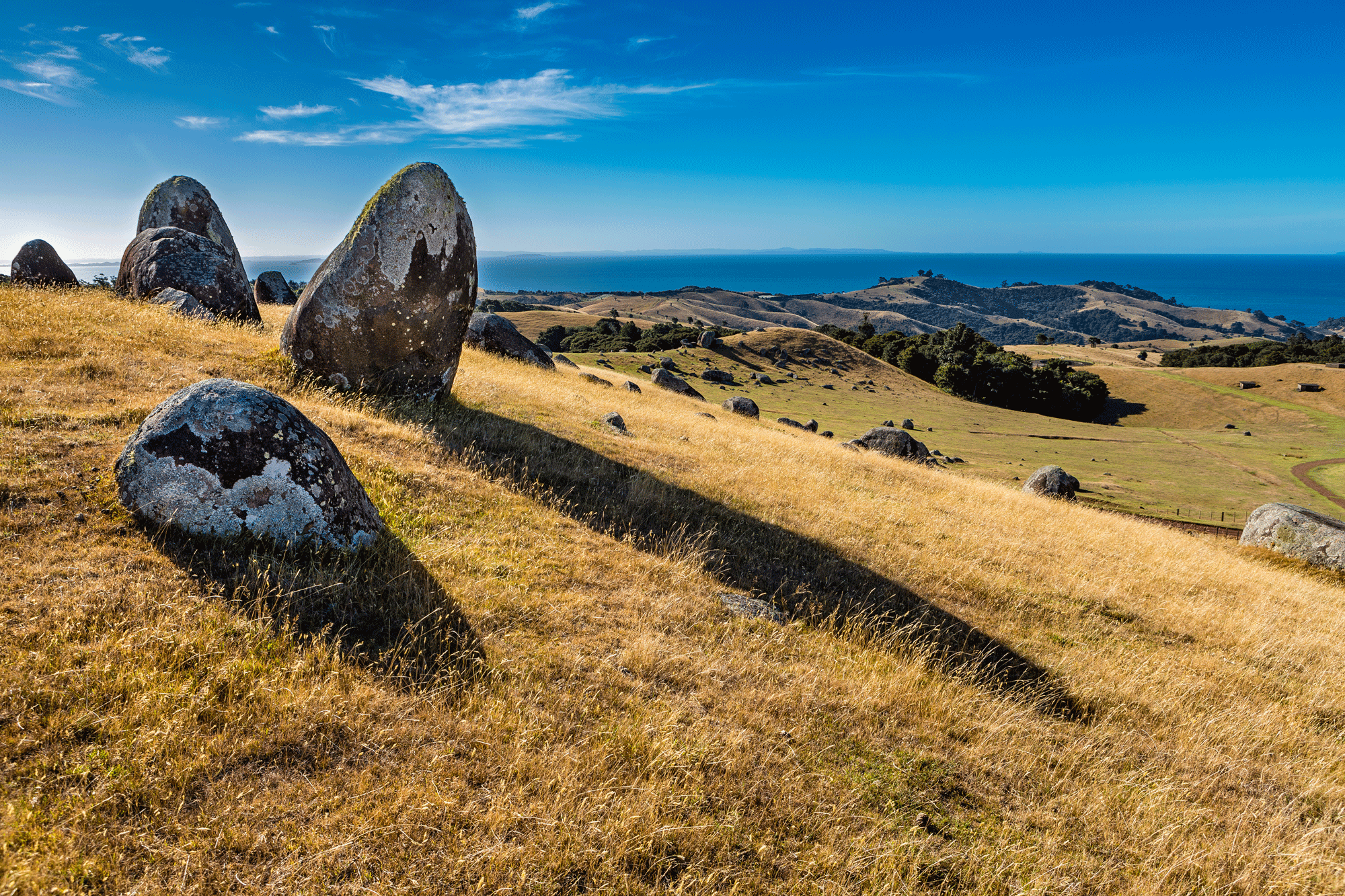
Hītori
Ngāti Pāoa
Pāoa was the youngest child of Hekemaru from Te Arawa and Heke-i-te-Rangi of Tainui. Our traditions state that the union of Hekemaru and Heke-i-te-Rangi brought all of the ancestral canoes together.
As an adult, Pāoa lived at Kaitōtehe on the Waikato River, with his wife Tauhākari and their children Toapoto, Toawhana and Kōura. An incident occurred where Pāoa was embarrassed that he could not entertain his elder brother Mahuta, as befitting a chief of noble rank when Mahuta arrived at Kaitōtehe unannounced. Consequently, Pāoa decided to leave his family and travel to Hauraki.
Pāoa followed the Mangawara River to its headwaters and then crossed over to the Piako River. Following the Piako River south he arrived at the pā Mirimirirau. Here he was accepted as a man of noble rank and lived among the local people.
Pāoa’s fame was heard throughout Hauraki and in particular by Tukutuku, the daughter of Taharua, and granddaughter of Tamaterā and Ruawēhea. Tamaterā was one of the sons of Marutūāhu, who had come from Kāwhia in search of his father, Hotunui. By the time of Pāoa’s arrival, the descendants of Marutūāhu had expanded significantly around the Hauraki region.
At the welcome request of Tukutuku, Pāoa resolved to travel to her village. He and his entourage headed northward along the Piako River through to the southern shore of Tīkapa Moana, thence turning eastward toward the Waihou River where he finally met Tukutuku at Ruawēhea, the place of Tukutuku’s ancestors. It was during this journey that the proverbs of Ngāti Pāoa were first coined – “Pāoa pukunui” and “Pāoa taringa rahirahi” – proverbs that both celebrated and exalted the virtues of Pāoa.
At Ngāhinapōuri, and following a prolonged courtship, Pāoa married Tukutuku, the great grand–daughter of Marutūāhu. There is a wealth of stories from this time, including how Pāoa was taken on a tour by Tukutuku and her people to see her lands. Tukutuku’s people also tested the suitability of Pāoa as a husband, by providing him the poorest food and lodgings. He accepted these challenges without complaint and thus gained their respect. Tukutuku herself was loved by her people for her industrious and kind nature.
The children of Pāoa and Tukutuku were the sons Huruhuru, Tipa and Horowhenua, and the daughters Hinetewau/Hinetewai, Hinemata and Hinetera.
Late in his life, Pāoa resolved to visit his first family, who he had left years before. Horowhenua was concerned the first family would try to detain Pāoa and this proved to be the case. Tipa and Horowhenua then rescued their father, but not before their half–brothers, Toapoto and Toawhana, were slain. Their half-sister Kōura was credited with preventing further bloodshed.
After this the siblings and their descendants took the name of their father, calling themselves Ngāti Pāoa to honour him. Descendants of both of Pāoa’s marriages with Tauhākari and Tukutuku later intermarried and still maintain strong interests within the central east Waikato region.
Pāoa and Tukutuku’s children inherited rights over a significant area. They and their descendants joined, and at times initiated campaigns that saw the expansion of the descendants of Marutūāhu across the Hauraki and Tāmaki regions. In the process marriages took place between Pāoa and Tukutuku’s children with specific branches of Waiohua in Tāmaki and Hauraki (i.e., Te Uri o Pou, Ngāti Tai), and with Ngāti Hako and other Hauraki tribes. This provided allies for their descendants and enduring connections to whenua. Intermarriages also took place with other descendants of Marutūāhu.
Sometimes internal conflicts took place, including between descendants of Marutūāhu, and between branches of Waiohua. Occasionally too conflict took place between hapū of Ngāti Pāoa.
Over time Pāoa and Tukutuku’s children, and their many descendants, formed numerous hapū who resided on the western shores of Tīkapa Moana (including the Hunua Ranges), the Hauraki Plains around the Piako River, many of the inner Gulf Islands (including Waiheke), and across the Tāmaki area, including the North Shore and up the Mahurangi coast.
Ngāti Pāoa were renowned for their prowess as highly mobile waka people, with many large waka taua and numerous pā and kāinga at strategic locations, all connected by water.
Marutūāhu Iwi
Over generations the descendants of Marutūāhu formed what is best described as a confederation of iwi, who worked together when need arose, often in times of war. The ‘Marutūāhu Iwi’ today include:
Ngāti Tamaterā
Ngāti Whanaunga
Ngāti Maru
Ngāti Pāoa
Te Patukirikiri, through its whakapapa and shared history with iwi of the Marutūāhu confederation, joined the collective Treaty settlement negotiations and participates in the Marutūāhu Collective Redress Deed.
Each of the Marutūāhu Iwi operates independently, and have their own Treaty settlement arrangements and post-settlement governance entities. Through Treaty settlement negotiations they also jointly negotiated collective redress.




